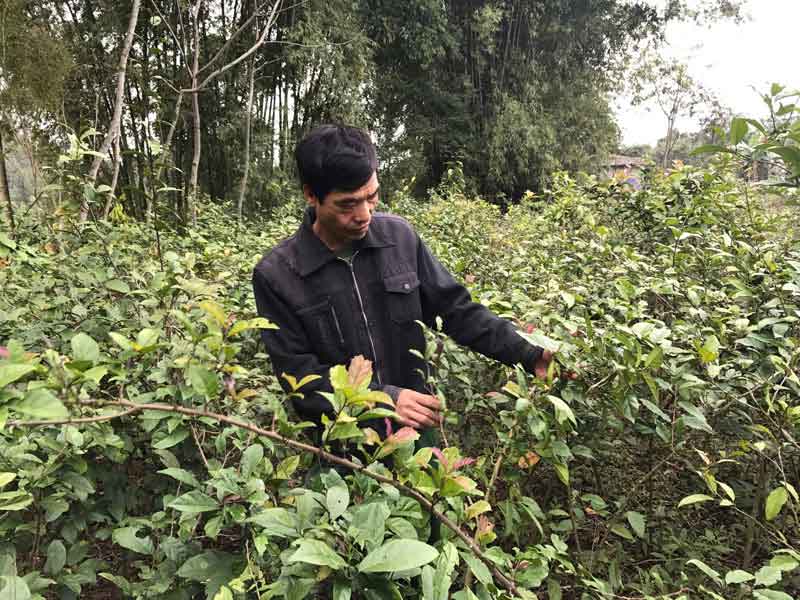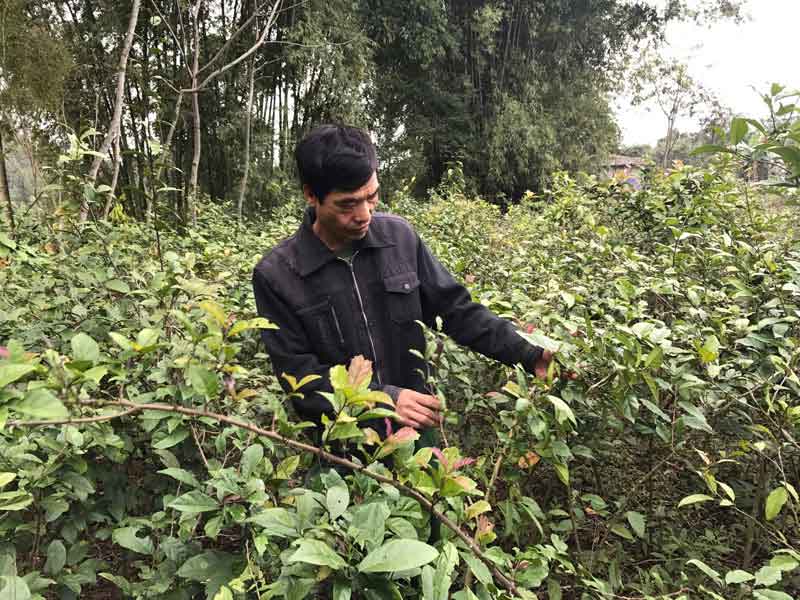
(HBO) -Celastrus hindsii is known for many uses such as heat releasing, detoxification, supporting for treatment of liver diseases, diabetes, blood fat and so on. Taking advantage of suitable climatic and soil conditions, in recent years, the farmers in Ba Khan commune (Mai Chau) have expanded the area of planting Celastrus hindsii, contributing to improving income and economic development.
Currently three of the three hamlets of Ba
Khan commune have been planting Celastrus hindsii with a total area of 5 ha.
With the ability to adapt well in dry weather conditions, easy to grow and
taking less care, many households have converted ineffective crop areas, hard
and hard-to-cultivate land to plant Celastrus hindsii.

Mr. Bui Van Mung, Khan Ha
village, Ba Khan commune (Mai Chau) earns 40-50 million dong / year.
Khan Ha hamlet has the largest area of
Celastrus hindsii in the commune with nearly 3 hectares, households growing
least are 100-200 m2 (20-30 trees), households grow most are 2,000 m2 (4,000 -
5,000 trees). According to the assessment, Celastrus hindsii is easy to grow,
it does not require much care and high technical requirements with short
harvest time. Celastrus hindsii is usually harvested in October every year,
taking leaves and stems, can be used fresh or dried to use gradually. In
medicine, Celastrus hindsii, a precious medicine can cure many diseases. The
output of Celastrus hindsii is relatively stable. It is often sold to
traditional chinese pharmacies and pharmaceutical companies. Many families have
a significant source of income from planting Celastrus hindsii.
The household of Mr. Bui Van Mung in Khan Ha
village planted the most Celastrus hindsii with an area of 2,000 m2. Mr. Mung
said: " Celastrus hindsii is harvested once a year in October. Each
harvest can get from 2 to 2.5 tons of fresh products. All products are
purchased by traditional medical doctors with the stable prices of 70,000 VND /
kg for the dry products. The profit from the Celastrus hindsii and the area of
cultivated rice and corn bring about 40-50 million VND a year for my family.
The whole commune has nearly 40 households
planting Celastrus hindsii. Celastrus hindsii trees bring significant economic
benefits, gradually improve the income and the people's lives.
According to data from the Hoa Binh Provincial Party Committee, the industrial production index for the first six months of 2025 is estimated to have increased by 20% compared to the same period last year. This marks the highest year-on-year growth rate for this period since 2020.
In the first six months of 2025, Hoa Binh province’s export turnover was estimated at 1.145 billion USD, marking an 18.11% increase compared to the same period in 2024. Import turnover was estimated at $ 804 million, a 17.15% increase, which helped the province maintain a positive trade balance.
The lives of the ethnic minority farmers in Tan Lac district have gradually improved thanks to the new directions in agricultural production. This is a testament to the collective strength fostered through the professional associations and groups implemented by various levels of the district’s Farmers’ Union.
With the motto the "product quality comes first,” after nearly one year of establishment and operation, Muong village’s Clean Food Agricultural and Commercial Cooperative, located in Cau Hamlet, Hung Son Commune (Kim Boi district), has launched reputable, high-quality agricultural products to the market that are well-received by consumers. The products such as Muong village’s pork sausage, salt-cured chicken, and salt-cured pork hocks have gradually carved out a place in the market and they are on the path to obtaining the OCOP certification.
In the past, the phrase "bumper harvest, rock-bottom prices" was a familiar refrain for Vietnamese farmers engaged in fragmented, small-scale agriculture. But today, a new spirit is emerging across rural areas of Hoa Binh province - one of collaboration, organisation, and collective economic models that provide a stable foundation for production.
Maintaining growing area codes and packing facility codes in accordance with regulations is a mandatory requirement for agricultural products to be eligible for export. Recently, the Department of Agriculture and Environment of Hoa Binh province has intensified technical supervision of designated farming areas and packing facilities to safeguard the "green passport" that enables its products to access international markets.



